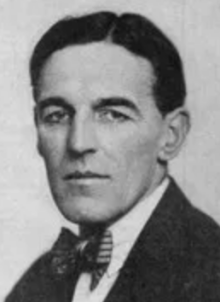
Humphrey Arthur Pakington [also known as 5th Baron Hampton] was born in Chelsea, London, England on 8 November 1888 and was the third son of the fourth Baron Hampton in 1888. He entered the Royal Navy in 1903 and served with distinction during the First World War. Following the war, he trained as an architect at the Architectural Association in London and was awarded thw Holloway Scholarship in 1922. He was elected an Associate of the Royal Institute of British Architects (ARIBA) in 1925 and a Fellow of the Royal institute of British Architects (FRIBA) in 1932.
In c.1930 with Roderick Eustace Enthoven (1900-1985) and John Grey he formed the architectural partnership Pakington, Enthoven & Grey in London.
A photograph, floor plan and brief description of 'Thornhill', near Rye in Sussex, and of fireplace in Ancaster stone, slate and marble, designed by Pakington Enthoven & Grey are illustrated in 'Decorative Art' 1931 (p.12); and a photograph of a deal sideboard, designed by Pakington Enthoven & Grey, and executed by Wm. Shurmur & Sons is illustrated in 'Decorative Art' 1932 (p.31); and a photograph and plan of Berroc End, near Ascot, designed by Pakington Enthoven & Grey is illustrated in 'Decorative Art' 1933 (p.20). Gray presumably withdrew from the partnership in c.1933 as by 1934 the firm is referred to as Pakington & Enthoven.
Projects by Pakington & Enthoven included the Robinson & Cleaver's store in Regent Street, London (1936); housing work for the Land Settlement Association (with R.G.S. Fidler, c.1937); an air raid shelter under a house in Upper Phillimore Gardens, London (1939); and a house in Bournemouth designed for Robinson & Cleaver (with G.I.C. Highet, c.1948). A photograph of a carving table in white wood designed by Pakington & Enthoven is illustrated in 'Decorative Art' 1934 (p.123); a photograph of a hall table, umbrella stand and hat and coat chest in chromium-plated metal, wood and glass, designed by Pakington & Enthoven is illustrated in 'Decorative Art' 1935 (p.34); photographs of the entrance hall to a London house, the dining room of a house in Campden Hill Square, London, and of a nursery of a house in London designed by Pakington & Enthoven are illustrated in 'Decorative Art' 1936 (pp.41, 72, 102); a photograph of a study-dressing room designed by Pakington & Enthoven for Mr Robert Sainsbury, Westminster, London, is illustrated in 'Decorative Art' 1939 (p.108); photographs of new stairs at 25 Upper Phillimore Gardens, London, and the interior of an air-raid shelter designed by Pakington & Enthoven are illustrated in 'Decorative Art' 1941 (pp.54, 75); and a photograph of a cedar and yew veneer dining table, designed by Pakington & Enthoven and made by Frederick Sage & Co. is illustrated in 'Decorative Art' 1943-48 (p.54).
Pakington was President of the Architectural Association in 1934–36.
In addition to his work as an architect, between 1931 and 1951 Pakington was a prolific novelist. In 1962 he became 5th Baron Hampton. He died in Martley, Worcestershire on 17 February 1974
Pakington, Humphrey. Bid time return. An autobiography. London : Chatto & Windus, 1958.